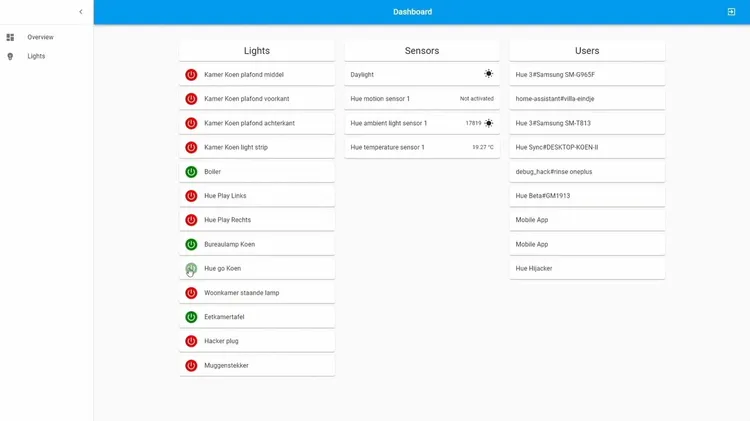
Hue Hijack
2021
ReactMUIExpress.jsAPISecurityKey Learnings
Through the exploration and development of the Phillips Hue lamp vulnerability project, I gained valuable insights into various aspects of cybersecurity, IoT device communication protocols, and web application development. The key learnings from this project include:
-
Protocol Analysis Skills: Conducted an in-depth analysis of the communication protocol between the user and the Phillips Hue Bridge, enhancing my understanding of how IoT devices communicate and potential security pitfalls.
-
Security Awareness: Explored and identified vulnerabilities in the Phillips Hue lamp control protocol, contributing to a heightened awareness of security risks associated with popular IoT devices.
-
Attack Simulation: Implemented attack scenarios through a web interface, simulating real-world situations to better understand potential threats and vulnerabilities in a controlled environment.
-
Documentation Practices: Developed comprehensive documentation of the project findings, presenting complex technical details in a clear and accessible manner for various audiences.
Technologies Used
-
React: Utilized the React library to build a dynamic and responsive user interface, showcasing proficiency in front-end development.
-
Express.js: Employed Express.js to develop a robust backend for the web interface, demonstrating back-end development skills in a Node.js environment.
-
Phillips Hue API: Leveraged the Phillips Hue API for seamless interaction with the Hue Bridge, showcasing integration capabilities with external IoT systems.
By combining these key learnings and the technologies employed in this project, I aim to not only highlight the technical skills developed but also showcase a holistic understanding of IoT security and web application development.
Abstract
With the proliferation of Internet of Things (IoT) devices, the adoption of smart devices like the Phillips Hue lamp has become widespread. The Phillips Hue lamp, known for its color-controlling capabilities, relies on either a direct Wi-Fi connection or a Phillips Hue Bridge for operation. Despite its primary function being color control, the device is susceptible to security vulnerabilities that are not widely recognized by the general public.
This project delves into the intricacies of the Hue control protocol that governs communication between the user and the Phillips Hue Bridge. The research focuses on uncovering potential weaknesses in the protocol that could be exploited by attackers. The ultimate goal is to raise awareness about the security risks associated with Hue lamps and propose potential safeguards.